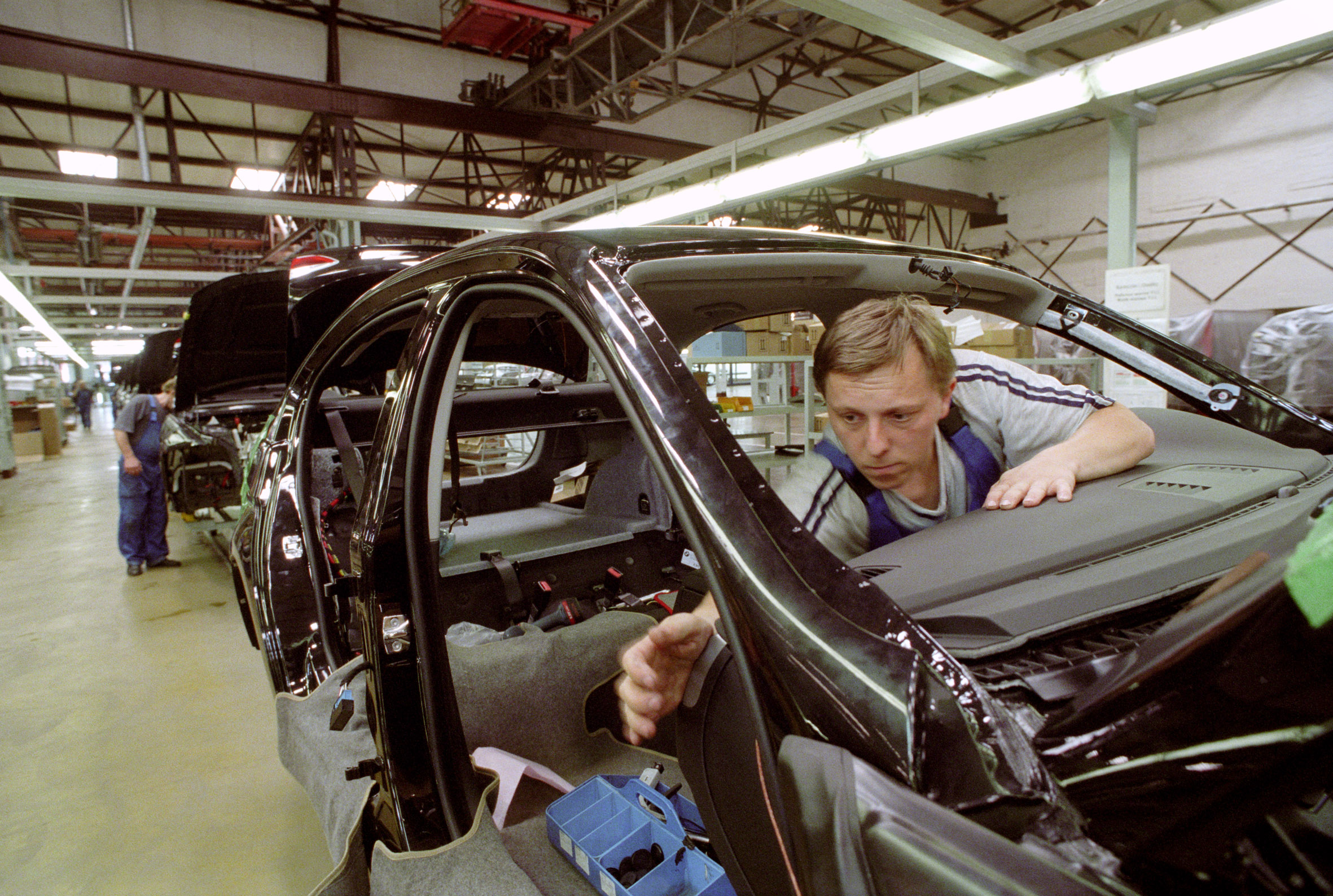There has been much debate about the impact of sanctions on Russia. If these sanctions result in further economic hardship, how might this impact political stability? To shed light on this question, it helps to explore three others: how Russian society has responded to previous economic shocks; what if anything might be different this time; and whether sanctions themselves allow the Kremlin to deflect blame.
One previous economic shock was the collapse of the Russian economy in the 1990s. Yet predictions of mass unemployment proved misplaced. Instead of shedding jobs at inefficient Soviet-era workplaces, employers cut wages dramatically. Wage cuts became so low they resulted in a crisis of «wage arrears.» While not leading to a feared «social explosion,» they did create a massive strike wave, culminating in the «rail wars» as coal miners blockaded the Trans-Siberian railway.
Putin’s rise to power came in the wake of these strikes and «rail wars.» His rule coincided with an oil boom, appearing to justify Putin’s claim to have restored «stability.» Yet when the global recession reached Russia in 2008−09, the labor market responded in the same way as the 1990s, with a sizeable drop in wages and a minimal rise in unemployment. It responded similarly during the economic downturn in 2014 and the pandemic years of 2020−21. The standard practice of the Russian labor market has been to pay a low base wage, with bonuses added by managerial fiat when times are good, and taken away when not. The informal economy acts as cushion for those who choose to leave formal employment. As a result, Russia remains a high-employment, low-wage economy.
While mass unemployment has been avoided, low wages have led to what might be called a «low productivity trap,» a major impediment to economic growth. According to the OECD, out of thirty-six comparator countries, Russian labor productivity is lower than that of Chile and Turkey, and outranks only Mexico and South Africa.
Despite the already «colossal» problem of low human capital in Russia before the war and the post-invasion «brain drain» since, the expected demand for highly skilled workers hasn’t increased. Given the cutoff of sophisticated components from Western suppliers, some Russian firms are responding by hiring more workers with low-to-medium skills, in effect replacing technology with low-paid labor. Such a practice will almost inevitably lead to even lower levels of productivity and a poorer society overall.
Social stability
What might all this mean for social stability? During the 2008−09 global economic crisis, some speculated that Russia’s single-industry «monotowns» might become a «time bomb» or a new Novocherkassk. Yet the downturn proved to be short-lived, and with the help of substantial subsidies and state intervention, social unrest was largely avoided. When protest broke out in the monotown of Pikalyovo, Putin was able to helicopter in and act as the workers’ savior. The brief recession of 2014 coincided with the temporary euphoria of «Crimea is ours!»
Yet there are several reasons to believe that the impact of the current economic crisis will be more severe. Not least, it is unlikely that this will be a short, «V-shaped» downturn as in 2008−09 and 2014. Nor is there much spare room to maneuver: before the war, real disposable incomes in Russia had been in decline for close to a decade. At some point further hardship becomes difficult to bear.
While the government’s increase in pension benefits and the minimum wage will provide some temporary support, unemployment benefits remain too low to provide a cushion for layoffs. In an indication that Russia’s labor market remains largely unchanged, from 2008 to 2022 wage arrears have remained by far the most prominent cause of labor protest. While the informal economy might continue to provide a low-wage alternative for some, many Russian families have accumulated consumer debt as a way to cope with stagnating living standards, making unpaid wages an even greater burden.
When fears of unrest brought Russia’s monotowns to widespread attention with the 2008 crisis, the government created an official list of such cities, towns and settlements, now totaling 321. Claiming success from its efforts on economic diversification, the government had recently announced plans to reduce the number of officially-recognized monotowns by half. With the imposition of sanctions, however, that long-discussed plan was scrapped.
This July, the Center for Strategic Research issued a report on monotowns entitled: «Risks 2022:
city-forming organizations and single-industry towns» which found that the dominant enterprises in 134 monotowns (employing roughly half a million workers) are directly impacted by sanctions, with a further 38 monotown firms indirectly impacted. While the firms are so far relying on the customary crisis measures of pay cuts and unpaid leaves, the report predicts layoffs will result as soon as the 3rd and 4th quarters of 2022. Tellingly, the impacted sectors include not only the hard-hit auto industry, but also the steel industry, recently seen as quite profitable but historically subject to the boom-and-bust cycle of commodity price and currency fluctuations. The Center’s report states that such monotown giants as Magnitogorsk and Cherepovets have been hit hard. Ironically, Cherepovets, dominated by the conglomerate Severstal, was not long ago held up by government officials as a success story and touted as the first monotown that was slated to leave the government’s monotown list.
Still, protests over wage arrears, layoff and conditions in individual workplaces and struggling monotowns are likely to be localized events. This is especially the case since labor unions, like other elements of civil society, have either been subordinated to the Kremlin or suppressed as «foreign agents.» Thus, the networks that might unite workers and others with grievances are few.
Not surprisingly then, the widespread protests that have erupted over social and economic grievances in Russia have almost always been spontaneous events, sudden reactions to government reforms that adversely impact a particular group. For example, protests arose in multiple regions in 2005 when the government sought to replace free public transportation for pensioners with cash benefits; in 2018 when it raised the pension age; and when, during the global economic crisis of 2009, it imposed a tax on imported vehicles to preserve jobs in the domestic auto industry. A tax on long-haul trucks in 2015 led to a sudden protest of truck drivers from Dagestan to Chita. While the truckers—seen as part of Putin’s core supporters—initially pleaded «President, help us,» in little over a year they called for a general strike and demanded his removal from office.
The Putin regime survived those protests; yet in each case they demonstrated the potential for economic grievances to become rapidly politicized, and for social groups with economic demands to combine with others calling for political change.
Sanctions and blame
Blame attribution — who is to blame? — is a key factor for protest mobilization. Sanctions, however, can complicate the question of blame. It is widely understood that sanctions have a poor record of achieving their goals; among other factors, economic hardship can be blamed on hostile outside forces. Yet some qualifications to these general findings might apply in the Russian case. In exploring the impact of (more limited) sanctions imposed after the seizure of Crimea in 2014, one study found little evidence that blaming the US and the EU for sanctions increased support for the Russian government; those less well-off were more likely to be concerned about the impact of sanctions.
Furthermore, regime type matters here. Cuba, Iran and North Korea — the countries typically invoked for their ability to withstand harsh sanctions — are all revolutionary regimes, with a clear ruling ideology and a large body of cadres to support the political system. Russia in contrast is a personalistic authoritarian regime, one that promotes a bricolage of ideological messaging with a single individual at the helm.
There is some evidence that personalistic regimes are more vulnerable to the impact of sanctions. They are almost certainly more vulnerable to popular uprisings. A key reason is blame. As some have argued, despite the economic collapse of the 1990s, rapid privatization and the weakness of the Yeltsin government made it difficult for average Russians to attribute blame for their hardship. With increasing state control over the economy in Putin’s Russia, that is no longer the case.
Putin’s approval ratings remain high. Yet personalistic authoritarians place themselves at the pinnacle of power and come to be seen as ultimately responsible for the country’s state of affairs. For such leaders, when social conditions become increasingly intolerable, large segments of the population can unite in the belief that he (and it’s almost always a «he») must be removed from power. The Arab Spring uprisings, as well as several «color revolutions» in post-Soviet states, provide clear examples.
Economic hardship complicates another serious challenge facing personalistic regimes: succession. While Putin could almost certainly get himself reelected in 2024, recent mass uprisings in neighboring states — both in worsening economic conditions — underscore the predicament. In Belarus in 2020, Lukashenko claimed a reelection victory one too many times. In Kazakhstan this past January, an increase in gas prices sparked an uprising that pointed to the problem of a long-term authoritarian handing power to a less charismatic successor. The leaders of Belarus and Kazakhstan remained in power, but arguably only through Russian backing (and in the Kazakh case, direct Russian military intervention). Should a similar uprising occur in Russia, who will prop up Putin?
For now, the probability of destabilizing social protest in Russia is low. But that could rise in the longer term. Living standards for average Russians had been stagnating for a decade before the war and sanctions, and should that trend continue, let alone worsen, patience could wear thin. With time—a time that could be measured in years rather than months—the Kremlin will almost certainly face a stark dilemma: either allow living standards to deteriorate further, or undertake reforms in an attempt to boost economic growth. Either step could result in destabilizing protest.










